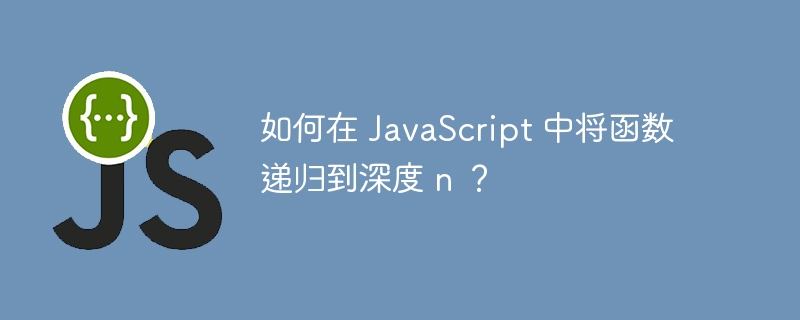如何在 JavaScript 中將函數遞歸到深度 n ?
- WBOYWBOYWBOYWBOYWBOYWBOYWBOYWBOYWBOYWBOYWBOYWBOYWB轉載
- 2023-09-05 15:01:021403瀏覽

在 JavaScript 中,如果函數接受一個或多個參數並傳回一個需要剩餘參數的新函數,則該函數被視為「柯里化」。柯里化是一種強大的技術,可用於從現有函數建立新函數,或「柯里化」深度為 n 的函數。
為什麼我們要取消函數參考?
您可能想要uncurry某個函數的原因有很多。例如,您可能想要 -
在需要非柯里化函數的上下文中使用柯里化函數
將柯里化函數轉換為非柯里化形式,使其更易於閱讀或除錯
#最佳化柯里化函數的效能
如何取消函數參考?
有兩種方法對函數進行咖哩化 -
第一種方法是使用「Function.prototype.apply」方法。
第二種方法是使用「Function.prototype.call」方法。
使用「Function.prototype.apply」方法
「Function.prototype.apply」方法可用來儲存深度為n的函數。為此,您需要只需將“this”值和參數數組傳遞給“apply”方法。例如 -
<!doctype html>
<html>
<head>
<title>Examples</title>
</head>
<body>
<p>uncurry up to depth 2 using Function apply() method</p>
<div id="result"></div>
<script>
function add(a, b) {
return a + b;
}
function curriedAdd(a) {
return function(b) {
return a + b;
}
}
// Uncurry the "curriedAdd" function up to depth 2:
document.getElementById("result").innerHTML = curriedAdd.apply(null, [1]).apply(null, [2]); // 3
</script>
</body>
</html>
使用「Function.prototype.call」方法
"Function.prototype.call" 方法也可用來將函式取消柯里化至深度 n。 「call」方法與「apply」方法類似,但您將「this」值和參數傳遞給「call」 i> 方法作為單獨的參數,而不是作為數組。例如 -
<!doctype html>
<html>
<head>
<title>Examples</title>
</head>
<body>
<p> uncurry up to depth 2 using Function call() method</p>
<div id="result"></div>
<script>
function add(a, b) {
return a + b;
}
function curriedAdd(a) {
return function(b) {
return parseInt(a) + parseInt(b);
}
}
// Uncurry the "curriedAdd" function up to depth 2:
document.getElementById("result").innerHTML = curriedAdd.call(null, [1]).call(null, [2]); // 3
</script>
</body>
</html>
在上面的範例中,我們使用了「call」方法來對「curriedAdd」函數進行了咖哩化。正如您所看到的,"call" 方法比 "apply" 方法稍微冗長一些,但它具有相同的效果。
使用「Function.prototype.apply」方法有什麼好處?
使用「Function.prototype.apply」方法來取消函數參考有幾個好處 -
「apply」方法比「call」方法更快。
「apply」方法比「call」方法得到更廣泛的支持。
「apply」方法比「call」方法更簡潔。
總之,柯里化是一種強大的技術,可用於從現有函數建立新函數,或「柯里化」深度為 n 的函數。
以上是如何在 JavaScript 中將函數遞歸到深度 n ?的詳細內容。更多資訊請關注PHP中文網其他相關文章!

